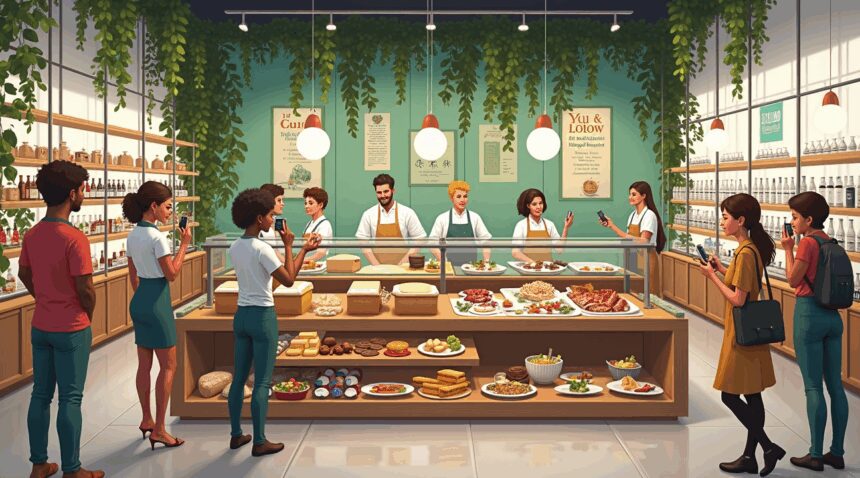The gourmet food industry is experiencing unprecedented growth, with global projections estimating the market to reach $898 billion by 2034. This expansion is driven by a consumer shift toward experience-based dining and authentic culinary exploration.
Key Takeaways
- Global Market Growth: The gourmet food sector is expected to achieve a value of $898 billion by 2034, supported by a substantial compound annual growth rate (CAGR) of 16.5%. This growth can be attributed to increasing disposable incomes and the rising demand for health-conscious options.
- Experience Over Price: Today’s diners prioritize the overall dining experience over cost. A striking 64% of full-service restaurant patrons value experience the most, while 78% gravitate toward establishments that emphasize local sourcing of ingredients.
- Plant-Based Innovation: The fastest-growing segment within gourmet offerings is plant-based foods. In the U.S., plant-based food sales climbed by 27% in 2020, with many new alternatives matching or surpassing traditional luxury foods in taste and presentation.
- Home Cooking Excellence: Gourmet cooking is no longer limited to restaurants. By focusing on ingredient quality, timing seasonings accurately, managing temperatures, and learning simple techniques like layering flavors, home cooks can achieve restaurant-quality dishes.
- Ethical and Transparent Sourcing: Authenticity is becoming a major selling point. Brands that offer transparency in their supply chains and emphasize sustainable practices are gaining loyalty from modern gourmet consumers. Ethical sourcing is no longer optional—it’s a competitive edge.
For further insight into how the gourmet sector is evolving and reshaping consumer tastes, check out this market report on gourmet food trends.
The Billion-Dollar Gourmet Revolution: Market Growth Reaching USD 898 Billion by 2034
The gourmet food industry stands on the brink of unprecedented expansion. I’ve observed remarkable momentum building across luxury food segments, with projections showing the global market will reach USD 898 billion by 2034. This explosive growth represents a compound annual growth rate of 16.5% starting in 2025, signaling a fundamental shift in how consumers approach premium dining experiences.
What drives this extraordinary expansion? Rising disposable incomes create opportunities for more households to explore innovative cooking techniques and premium ingredients. Health-conscious lifestyles fuel demand for artisanal products that don’t compromise on quality or nutritional value. Urbanization concentrates affluent consumers in metropolitan areas where gourmet options flourish, while social media transforms food culture by making luxury dining experiences more visible and aspirational.
The organic food sector reinforces this trend, with worldwide sales expected to hit USD 380.84 billion by 2025 at an 8.4% growth rate. This parallel growth demonstrates that today’s consumers don’t just want luxury—they want clean, responsibly sourced luxury that aligns with their values.
Plant-Based Innovation Reshapes Luxury Food
Plant-based alternatives represent the most dynamic segment within this expansion. U.S. plant-based food sales surged 27% in 2020, directly challenging traditional gourmet staples. This growth affects everything from artisanal cheese alternatives to premium chocolate made without dairy, forcing established luxury brands to innovate or lose market share.
I’ve noticed that successful gourmet brands now balance tradition with innovation. Culinary experts increasingly showcase plant-based gourmet options that rival their conventional counterparts in both flavor and presentation. Premium food producers respond by developing sophisticated alternatives that maintain the indulgent experience consumers expect from luxury products.
The expanding global middle class amplifies these trends exponentially. Emerging markets contribute significantly to growth as newly affluent consumers discover gourmet foods previously unavailable or unaffordable. Professional chefs capitalize on this expansion by creating accessible entry points into gourmet dining while maintaining premium positioning.
Social media accelerates adoption across all demographics. Visual platforms transform how people discover, share, and purchase luxury food products. Celebrity food brands leverage this visibility to reach broader audiences, while established gourmet producers adapt their marketing strategies to engage digitally native consumers who expect authentic, shareable experiences from their food choices.

What Makes Consumers Choose Experience Over Price in Gourmet Food
I’ve observed a fundamental shift in how customers approach gourmet food decisions. The traditional price-focused mindset has given way to something far more nuanced and experience-driven. In full-service restaurants, 64% of customers prioritize the overall dining experience above cost considerations, while 47% of limited-service patrons share this experience-first mentality. This data reveals that even budget-conscious diners understand the value proposition extends beyond the dollar amount on their receipt.
The movement toward experiential dining reflects a deeper cultural transformation. Customers now seek authenticity, atmosphere, and memorable moments that justify premium pricing in gourmet establishments. They’re willing to pay more when restaurants deliver exceptional service, unique culinary presentations, and environments that create lasting impressions. This shift explains why successful gourmet establishments focus heavily on ambiance, staff training, and innovative menu development rather than competing solely on price points.
The Sustainability and Local Sourcing Revolution
Sustainability has emerged as a decisive factor in gourmet food consumption, with 78% of consumers expressing strong preferences for restaurants that source ingredients locally. This preference stems from multiple motivations that extend beyond environmental consciousness. Local sourcing often translates to fresher ingredients, unique seasonal offerings, and stronger community connections that enhance the overall dining experience.
The benefits of prioritizing sustainability-focused establishments include:
- Access to fresher, more flavorful ingredients that change with seasons
- Support for local farmers and producers, creating community connections
- Reduced environmental impact through shorter transportation chains
- Unique menu offerings that reflect regional culinary traditions
- Enhanced storytelling opportunities that connect diners to their food sources
This trend has revolutionized how gourmet restaurants market themselves and structure their supply chains. Establishments now prominently feature their local partnerships and sustainable practices as key selling points, understanding that modern consumers view these commitments as indicators of quality and authenticity.
The rise of takeout and delivery services has further democratized gourmet food experiences. With 43% of diners choosing takeout or delivery at least once per week, restaurants have adapted their offerings to maintain quality standards in off-premise consumption. This shift has sparked unprecedented home-based gourmet food experimentation, as consumers discover high-end ingredients and techniques through delivery platforms and meal kits.
Home cooking enthusiasts now access restaurant-quality ingredients and recipes that were previously exclusive to professional kitchens. The convenience of delivery combined with educational content from culinary experts has created a new category of informed home cooks who appreciate gourmet techniques and ingredients. This knowledge transfer has elevated general food literacy and increased demand for premium ingredients in retail settings.
The broader food service industry reflects these changing priorities through its impressive growth trajectory. Industry projections indicate the sector will reach $1 trillion in sales by 2025, driven largely by consumers’ willingness to invest in exceptional food experiences rather than simply seeking the lowest prices available.
Culinary tourism represents another significant dimension of experience-driven food consumption. This sector contributes approximately $1.4 trillion annually to global travel expenditure, demonstrating how food experiences have become primary motivations for travel decisions. Travelers actively seek destinations known for unique culinary offerings, viewing food as an essential component of cultural exploration rather than mere sustenance.
The intersection of food and travel has created new opportunities for gourmet establishments to cater to experience-seeking customers. Restaurants now develop signature experiences that appeal to both local diners and traveling food enthusiasts, understanding that memorable culinary encounters generate valuable word-of-mouth marketing and social media engagement.
These trends indicate that successful gourmet food businesses must prioritize experience creation over cost-cutting strategies. Customers consistently demonstrate their willingness to pay premium prices for establishments that deliver authentic experiences, sustainable practices, and convenient access to high-quality food. Understanding culinary exploration becomes essential for businesses seeking to capture this experience-focused market segment.
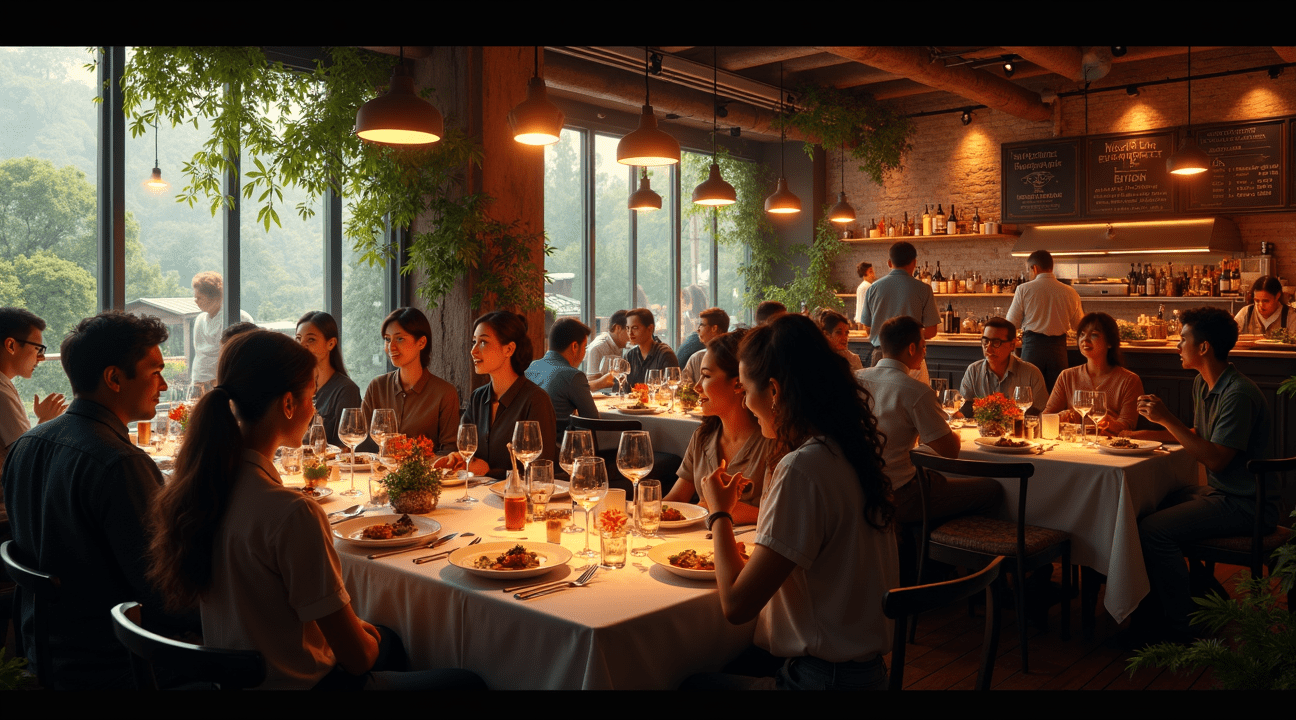
From Artisanal Breads to Plant-Based Luxuries: Today’s Most Popular Gourmet Categories
The bakery segment stands proudly at the forefront of today’s gourmet market, commanding attention from discerning consumers across the globe. Artisanal baked goods, gourmet desserts, and luxury chocolates drive this category’s impressive growth, with European countries like France and Belgium leading the charge in both production excellence and consumer appreciation.
I’ve observed remarkable expansion in premium, single-origin, and organic wheat products, which continues to fuel the bakery category’s upward trajectory. This shift reflects consumers’ growing appreciation for quality ingredients and traditional craftsmanship methods that innovative cooking techniques can enhance.
Essential Gourmet Categories Shaping Today’s Market
- Specialty cheeses from regions renowned for their dairy traditions
- Fine wines and spirits that showcase terroir and craftsmanship
- Gourmet meats featuring premium cuts and artisanal preparation methods
- Specialty chocolates that highlight single-origin cacao and unique flavor profiles
- Gourmand condiments and sauces that elevate everyday dishes
- Artisanal breads and pastries crafted with traditional techniques
Plant-based gourmet foods represent one of the most exciting developments in this space, offering sophisticated alternatives to traditional animal-based products. These innovations witness rapid expansion as manufacturers perfect techniques that deliver authentic textures and complex flavor profiles. Premium plant-based cheeses now rival their dairy counterparts in both taste and presentation, while plant-based charcuterie options provide compelling alternatives for conscious consumers.
Luxury chocolates maintain their position as cornerstone gourmet products, with artisans pushing boundaries through unique ingredient combinations and presentation methods. Single-origin chocolates allow consumers to experience distinct regional characteristics, much like fine wines express their specific terroir.
The artisanal bread movement continues its renaissance, with bakers returning to time-honored fermentation processes and heritage grain varieties. These products command premium prices because they deliver superior flavor, texture, and nutritional profiles compared to mass-produced alternatives.
Premium wines represent another pillar of the gourmet category, with consumers increasingly seeking bottles that tell compelling stories about their origins, production methods, and the passionate individuals behind them. This trend mirrors the broader movement where culinary expertise becomes as important as the final product itself.
Specialty condiments and sauces provide accessible entry points into gourmet experiences, allowing home cooks to transform simple ingredients into restaurant-quality dishes. These products often feature unique flavor combinations, premium ingredients, or traditional preparation methods that justify their elevated price points while delivering exceptional culinary results.
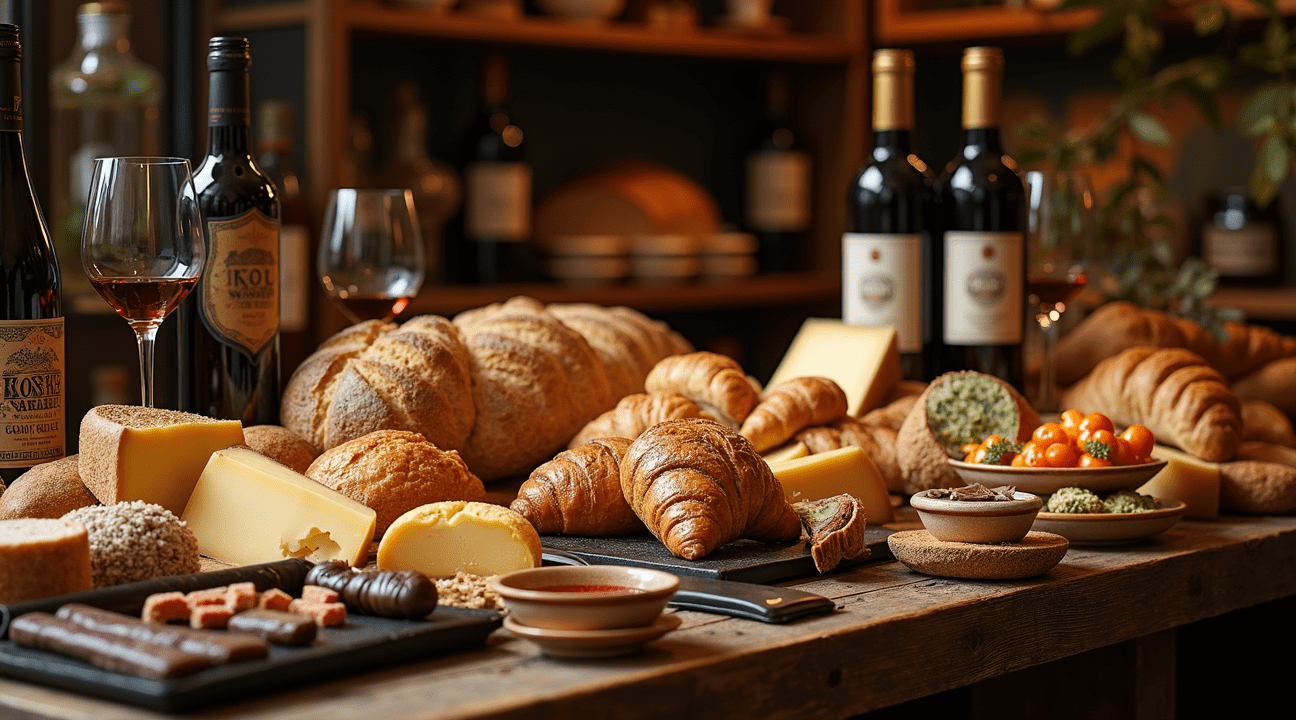
Simple Techniques for Creating Restaurant-Quality Meals at Home
I’ve discovered that creating restaurant-quality dishes at home doesn’t require years of culinary training or expensive equipment. The foundation lies in mastering a few essential techniques and sourcing quality ingredients that make ordinary recipes extraordinary.
Fresh herbs transform any dish from basic to brilliant. I always keep basil, rosemary, and thyme on hand because they elevate everything from simple pasta to roasted vegetables. Single-origin spices offer another layer of complexity – swapping regular paprika for Hungarian sweet paprika or using Ceylon cinnamon instead of cassia creates noticeable depth in flavor profiles.
Quality ingredients matter more than complicated preparations. Organic vegetables provide cleaner, more vibrant flavors that shine through minimal cooking methods. Fine chocolates, artisanal breads, and specialty cheeses bring professional-grade components directly to home kitchens. Cooking techniques that focus on ingredient quality often produce better results than elaborate methods using mediocre products.
Essential Gourmet Techniques Anyone Can Master
These fundamental approaches consistently deliver restaurant-quality results:
- Proper seasoning timing – salt proteins 40 minutes before cooking for better moisture retention
- Temperature control – using instant-read thermometers ensures perfectly cooked meats every time
- Acid balance – finishing dishes with lemon juice or quality vinegar brightens flavors instantly
- Texture contrast – combining crispy, creamy, and tender elements in single dishes
- Plating presentation – using white plates and strategic garnishing creates visual appeal
Plant-based and sustainable ingredients have revolutionized gourmet cooking accessibility. High-quality plant proteins, specialty oils, and organic produce allow for sophisticated dishes that appeal to various dietary preferences while maintaining restaurant standards.
Digital resources have democratized gourmet cooking education. Online culinary courses teach professional techniques through step-by-step video instruction, while mobile recipe apps provide instant access to chef-tested recipes. Culinary expertise that once required formal training now becomes accessible through these platforms.
Niche food retailers and specialty online stores make premium ingredients available nationwide. Artisanal bread suppliers, specialty cheese importers, and spice merchants deliver restaurant-grade components directly to consumers. This accessibility eliminates the barrier between professional kitchens and home cooking.
I focus on building flavor layers rather than adding complexity. Simple techniques like properly browning proteins, deglazing pans for sauce bases, and finishing dishes with quality fats create professional results. Professional chefs often rely on these same fundamental methods rather than elaborate preparations.
The key lies in understanding that gourmet cooking emphasizes ingredient quality and precise execution over complicated procedures. Home cooks can achieve remarkable results by focusing on these principles while gradually expanding their technique repertoire.
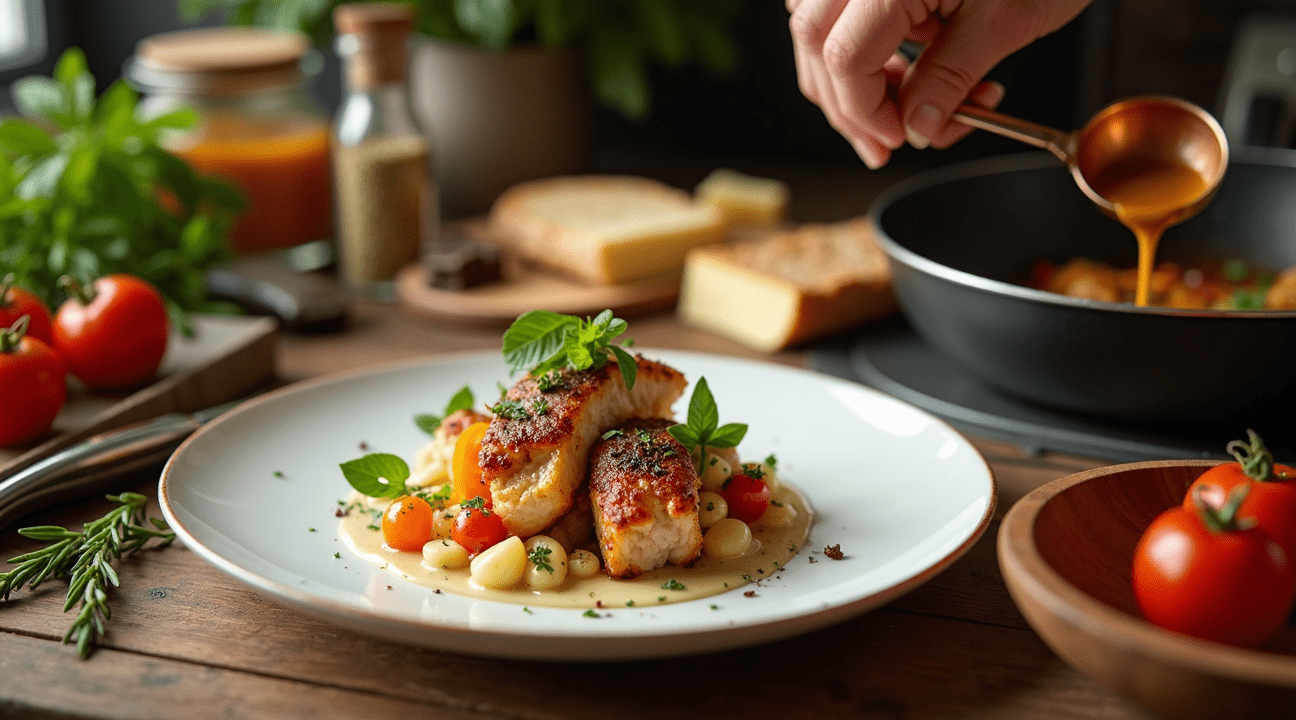
Overcoming Quality Control and Sourcing Challenges in the Gourmet Food Industry
I’ve witnessed firsthand how gourmet food producers constantly grapple with maintaining exceptional standards while scaling their operations. Quality control isn’t just about taste—it’s about building trust with consumers who expect perfection in every bite. Food safety protocols must be flawless, as even minor lapses can devastate a brand’s reputation and consumer confidence.
Supply chain traceability has become non-negotiable for serious gourmet producers. Consumers want to know exactly where their premium ingredients originate, how they’re processed, and what journey they take before reaching their plates. This transparency isn’t just a marketing advantage—it’s essential for identifying potential issues before they become costly recalls or safety concerns.
Securing sustainable, high-quality ingredients requires developing long-term relationships with trusted suppliers. I recommend establishing direct partnerships with farmers and artisanal producers whenever possible. These relationships provide better quality control and often lead to exclusive access to premium ingredients that competitors can’t easily replicate.
Emerging Opportunities in Modern Gourmet Markets
The plant-based gourmet segment represents one of the most exciting growth areas I’ve observed in recent years. Sophisticated consumers no longer view plant-based options as compromises—they’re seeking genuinely exceptional flavor experiences that happen to be plant-forward. This shift has created opportunities for innovative producers who can deliver creative cooking techniques that elevate vegetables and plant proteins to gourmet status.
Online specialty retail channels have revolutionized how gourmet producers reach consumers. Direct-to-consumer platforms allow brands to tell their stories while maintaining premium pricing structures. These channels also provide valuable customer data that helps refine products and predict demand patterns.
Experiential dining has opened new revenue streams for gourmet food producers. Pop-up events, cooking classes, and collaborative dinners with renowned chefs create memorable brand experiences that command premium prices. These events also generate social media buzz that traditional advertising can’t match.
Government initiatives like India’s ‘One District One Product’ program demonstrate how policy support can nurture specialty food markets. These programs help small-scale artisanal producers access broader markets while preserving traditional production methods that create unique value propositions.
Sustainable sourcing practices have evolved from ethical considerations to competitive advantages. Consumers increasingly choose brands that demonstrate environmental responsibility, creating market premiums for sustainably produced gourmet foods. However, implementing these practices requires careful verification to avoid greenwashing accusations that can damage brand credibility.
Technology plays an increasingly vital role in addressing quality control challenges. Blockchain systems now enable end-to-end traceability, while IoT sensors monitor storage conditions throughout the supply chain. These tools help producers maintain consistency while providing verifiable proof of quality standards to discerning customers.
Building resilient supply chains requires diversification strategies that balance quality with reliability. Single-source ingredients might offer superior quality, but they create vulnerability to weather events, political instability, or other disruptions. Smart producers develop backup suppliers while maintaining primary relationships with preferred sources.
Quality testing protocols must extend beyond basic safety requirements to include:
- Sensory evaluation
- Nutritional analysis
- Consistency metrics
Regular third-party audits help maintain objectivity while building credibility with wholesale buyers and retail partners who demand reliable quality assurance.
The rise of specialty retailers has created new distribution opportunities, but these partnerships require careful management. Each retailer has specific:
- Quality standards
- Packaging requirements
- Delivery schedules
Success in these channels depends on operational excellence and the ability to scale without compromising quality standards.
Modern gourmet food producers must balance tradition with innovation, maintaining authentic flavors while adapting to contemporary consumer preferences and production requirements. This balance requires continuous investment in both traditional craftsmanship and modern quality control systems that support sustainable growth in an increasingly competitive marketplace.
https://www.youtube.com/watch?v=zTLkXBajnG0
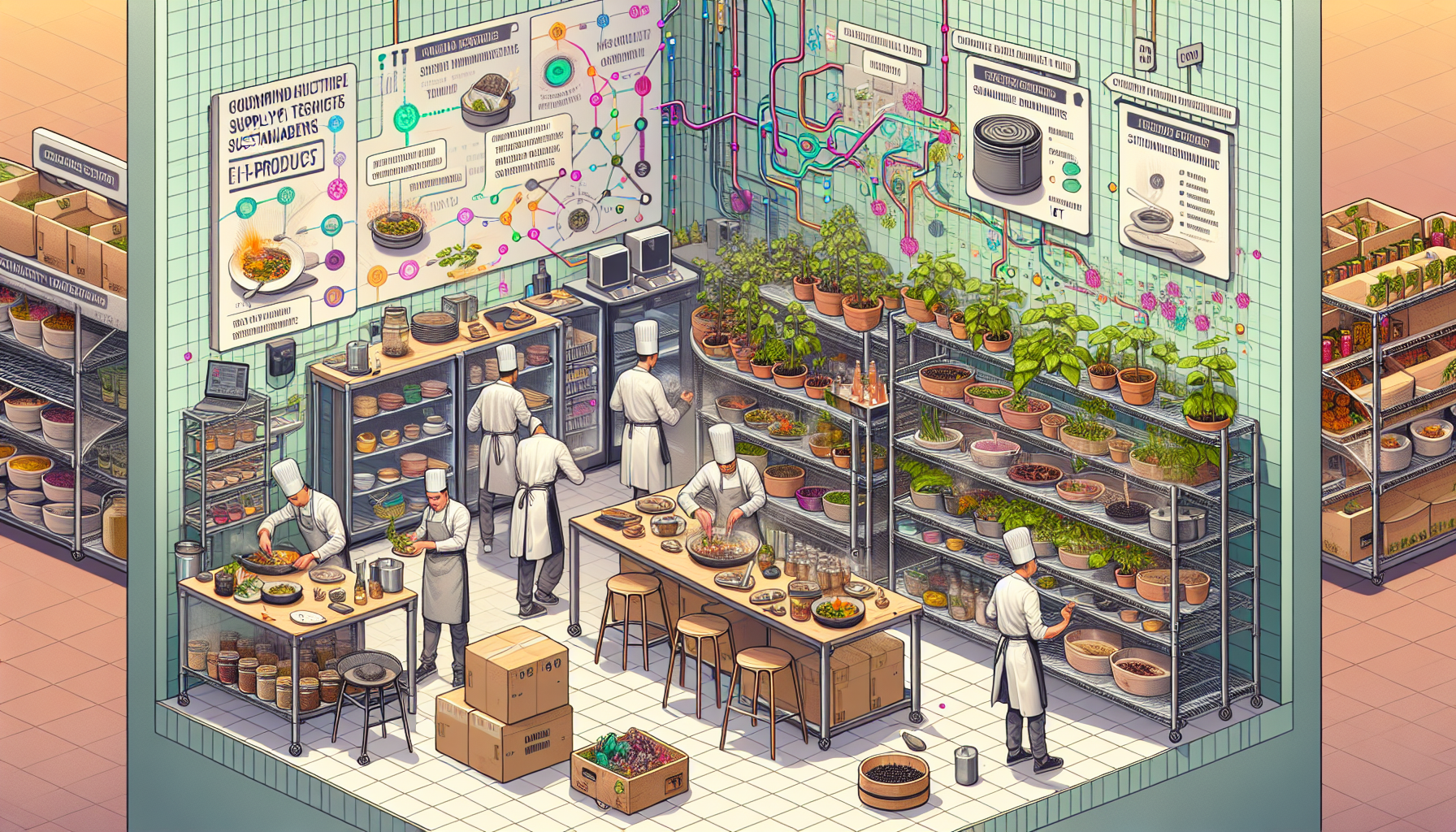
The Role of Authenticity and Ethical Sourcing in Modern Gourmet Food Success
Consumer preferences have shifted dramatically in recent years, with authenticity becoming the cornerstone of successful gourmet food ventures. Modern food enthusiasts aren’t just buying products; they’re investing in stories, values, and experiences that align with their personal beliefs. This transformation has fundamentally changed how gourmet food brands approach everything from ingredient selection to marketing strategies.
Social media platforms have amplified this demand for genuine culinary experiences, creating a space where visual appeal must coexist with authentic storytelling. Food brands that can demonstrate real commitment to quality and ethical practices find themselves with engaged audiences who become loyal advocates. The Instagram-worthy presentation that once dominated food trends now requires substance behind the style.
Transparency as the New Currency
Today’s shoppers demand unprecedented transparency about their food choices. They want to know where ingredients originate, how they’re cultivated, and what impact their purchases have on communities and environments. This curiosity extends beyond simple labeling requirements to encompass the entire supply chain journey.
Culinary experts recognize that transparency builds trust, which directly translates to brand loyalty in the competitive gourmet market. Brands that openly share their sourcing stories, farmer partnerships, and production methods create emotional connections that transcend traditional marketing approaches.
Premium ingredient preferences have evolved to prioritize quality over quantity, with consumers willing to pay higher prices for products that demonstrate clear ethical standards. This shift has created opportunities for smaller producers who can tell compelling stories about their practices while maintaining exceptional quality standards.
Sustainability Driving Innovation
Plant-based gourmet foods represent one of the fastest-growing segments within the ethical food movement. Innovative chefs and food manufacturers are creating sophisticated plant-based alternatives that rival traditional gourmet offerings in both taste and presentation. These developments aren’t just capturing environmentally conscious consumers; they’re attracting curious food lovers seeking new flavor experiences.
The sustainability movement has pushed gourmet food producers to reconsider every aspect of their operations. Some key factors driving this transformation include:
- Regenerative agriculture practices that improve soil health while producing premium ingredients
- Zero-waste production methods that maximize ingredient utilization
- Local sourcing initiatives that support regional economies while reducing transportation impacts
- Seasonal menu planning that celebrates natural growing cycles
- Packaging innovations using biodegradable or reusable materials
Ethical sourcing has become a competitive advantage rather than simply a nice-to-have feature. Consumers actively seek brands that support fair trade practices, pay living wages to farmers, and contribute positively to their source communities. Professional chefs increasingly build their reputations on these principles, understanding that modern diners care about the impact of their meal choices.
The gourmet food market continues evolving as younger consumers drive demand for products that align with their values. These shoppers research brands extensively before making purchases, reading ingredient lists, investigating company practices, and seeking recommendations from trusted sources. They’re willing to pay premium prices for foods that deliver exceptional taste while supporting causes they believe in.
Traditional cooking methods are experiencing renewed interest as consumers seek authentic culinary experiences that connect them to food heritage and cultural traditions. This trend supports artisanal producers who maintain time-honored techniques while meeting modern quality and safety standards.
Food culture itself has transformed into a vehicle for expressing personal values and identity. Gourmet food choices serve as statements about environmental consciousness, social responsibility, and appreciation for craftsmanship. Successful brands recognize this shift and position their products as extensions of their customers’ values rather than mere consumables.
The intersection of authenticity and ethical sourcing continues shaping the gourmet food landscape, creating opportunities for brands that can genuinely deliver on both fronts while maintaining the exceptional quality that defines the gourmet category.
Sources:
Blank

